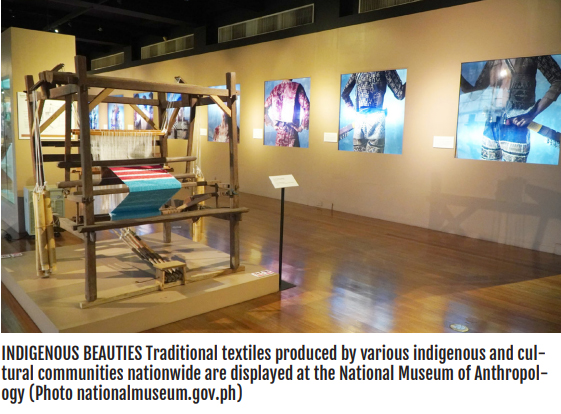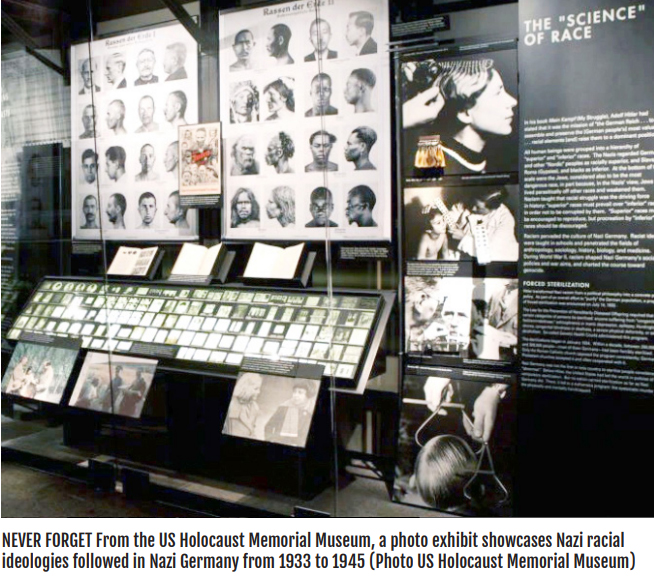Endurance, resilience, and victory (Part 3)
Illuminating the past and inspiring the present
WALA LANG

The Filipino people are not homogeneous. Pinoys live in different terrain, earn livelihoods in different ways, speak different languages, have experienced different pasts. Each group is unique in its own history and culture, in the same way that Black Americans’ experience differs from that of White Americans.
The Tausug, Maranao, and Maguindanao of Mindanao, the Kalinga, Bontoc, Ifugao, and other Cordillera groups were never subdued by the Spanish. They continued in their traditional ways and consequently markedly different from the Christianized lowlanders, consequently described as “uncivilized.”
Indeed the ilustrados were embarrassed over the inclusion of non-Christian groups in Madrid’s 1887 Exposición General de las Islas Filipinas. Nowadays, cultural communities’ attire, dances, and rituals highlight many of our cultural presentations even as their achievements, say in agriculture, engineering, design, and craftsmanship, are mostly taken for granted or admired as curiosities.
The Cultural Center of the Philippines has a collection of our cultural minorities’ musical instruments. The National Museum of Anthropology and regional museums have textiles, religious images, adornments, and other artifacts. They are there, however, as objects to be admired but out of context, not parts of a tapestry of history and culture.
An institution similar to the US National Museum of African American History and Culture would do wonders in fostering mutual respect, unity, and pride among Filipinos.
The Tausugs of Sulu and Chinoys are two of our important minority groups. A quick internet research gives a glimpse of the rich and colorful past of these cultural communities.
The Tausug of Sulu
There are watchtowers all over Luzon and the Visayas, lookouts for “Moro pirate raids,” suggesting a part of our nation that needs greater understanding.
It is well known that in 1417 Sulu Sultan Paduka Batara visited Ming Dynasty China. He died while abroad and was buried in Dezhou, Shandong province south of Beijing where his descendants still live. Only partly in public consciousness are other significant aspects of its history.
Sulu was a sovereign state and its rulers were relatives of the rulers of Brunei and Maynilad. Spanish King Philip IV, who reigned from 1621 to 1665, is said to have written the sultan of the time to allow Jesuit missionaries into his kingdom.

One of the most highly regarded sultans was Muhammad Alimuddin who ruled Sulu from 1735 to 1748 and then again in 1764 to 1774. He began discussion on a peace treaty with the Spanish but discussions broke down and he was imprisoned. He was still incarcerated when the Spanish surrendered Manila to the Brits in 1762. Interested in developing ties with Sulu, the Brits freed and entered into a Treaty with Alimuddin. With the end of the British presence in 1764, he was able to return to Sulu and recover his throne.
The French and British sought Sulu assistance in furthering their colonial and commercial ambitions in nearby countries. Negotiations between Sulu and the British East India Company over North Borneo led to claims over Sabah. It seems the Suluanon position was that Sabah was being leased for an annual rent while the Brits thought they were buying Sabah on installment.
The Tausug, Maranao, and Maguindanao were at war with the Spanish for centuries but were finally defeated by the Americans and became part of the Philippines in the early 1900s.
The Chinoy community
Bahay Tsinoy in Intramuros and the China Bank Museum in Binondo help visitors learn at least part of the role the Chinese have played in Philippine life. There is much more.
The Chinese had been trading with Filipinos for centuries but there were rarely any resident Chinese at the time of the Spanish arrival. The Chinese community grew starting in the late 1500s, consisting largely of merchants attracted by the Galleon Trade and craftsmen catering to Spanish residents. The first books printed in the Philippines were by a Chinese.
The Chinese were needed but were exploited and treated harshly. Sometimes the Chinese struck back. The Spanish were at war with the Dutch and Governor General Gomez Perez Dasmariñas (1590-1593) conscripted Chinese as rowers on a ship headed for the Moluccas. Being neither seamen nor slaves and with the hard labor and cruel treatment, they mutinied and killed Dasmariñas soon after leaving Manila, just off Maricabán island in Batangas.
There were Chinese uprisings including one in 1603 when they set fire to the surrounding villages and threatened Intramuros itself. The resulting massacres wiped out an estimated 30,000 Chinese. Survivors fled to Guagua (Pampanga), Biñan (Laguna), and elsewhere. Accounts of Chinese rebellions relate how they desecrated the image of the Virgin of Antipolo and committed other acts of vengeance.
Christianized Chinese were permitted to settle in Binondo while the unconverted were required to live in Parian just outside and under the guns of Intramuros. They were active participants in the Galleon Trade, bringing in goods from China and other Asian countries that they then sold to eligible galleon shippers; financing both importers and exporters; and in general trading and financing. The Chinese sided with the enemy during the 1762-1764 British Occupation of Manila, except for the wealthy Son Tua who was richly rewarded after the British left.
A large area outside the Intramuros walls was totally cleared of buildings to strengthen the walled city’s defenses. Possibly as revenge, the Parian was totally demolished as part of the project and its residents moved out. Famine and disorder in China during the 19th century led to another wave of migration, greatly contributing to Philippine economic development. They went into logging and other businesses, financed among others by China Bank. They flourished in trade, so much so that the Retail Trade Nationalization Law was enacted in 1954. Unfazed, the business-minded Chinese went into other lines and their descendants are business leaders all over the country. They are members of the Federation of Chinese Chambers of Commerce and the Chinese-Filipino Business Club.

Lowland Christian Filipinos
General knowledge of the history and culture of lowland Filipinos is also shaky. Their pre-Hispanic past can be deduced from objects that they made and used, particularly those that they buried with their dead. Museums exhibit excavated pottery, imported ceramics, gold jewelry and death masks, but these are presented mainly for their beauty or rarity.
The labels and wall text of excavated ceramics, for example, describe what they are and which Chinese or Annamese or Thai kilns produced them. Unanswered are questions like: how were they used, how they got here, why our ancestors liked them, what did they pay in return, and so on.
Viewer takeaways are little more than how rich ancient Filipinos must have been to have so much gold and expensive imported ceramics, how skilled our ancient goldsmiths were, and how lucky we are to be able to dig their graves up and find such pretty and costly stuff.
No less interesting are economic developments after the Galleon Trade ended in 1815 when American and Europeans other than Spaniards set up trading houses here and when native entrepreneurs went into sugar, coconut, coffee, fish culture, and other new industries. Still later, American Regime investors went into mining and other industries.
Filipinos can raise their heads higher knowing more about how we emerged strong from our own Holocausts. We will also be stronger knowing the challenges, disappointments, victories, and achievements of the communities that compose the Filipino people. We need institutions like the US Holocaust and African American Museums to illuminate the past, celebrate the present, and inspire the future.
Notes: (a) The Parian district was located in the present Liwasang Bonifacio and adjoining areas where stand the Metropolitan Theater and Mehan Garden; and (b) After the British left in 1764, the grateful Spanish government rewarded Son Tua with land that was most of what is Quezon City now. He was also given a hereditary title, making him a Spanish nobleman. He adopted the surname Tuason and is the ancestor of the prominent Tuason family.
Comments are cordially invited, addressed to [email protected].